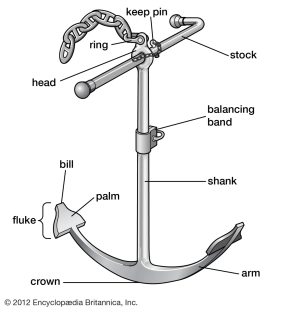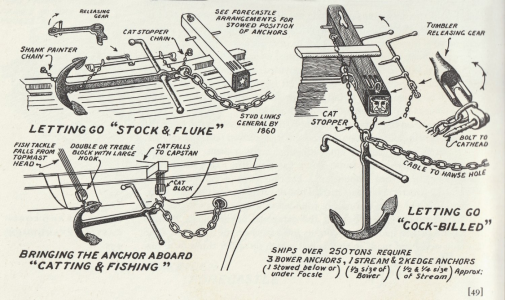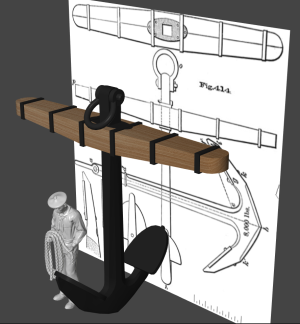Thanks Chuck, at the moment I am busy with my build log on the Porsche 917K. I tend to bounce around.Dean! Thank you! I have been following the wonderful expansion of your WW I and WW II fighter plane collection. Absolutely love it!
Blessings. Peace. Gratitude.
Chuck
You are using an out of date browser. It may not display this or other websites correctly.
You should upgrade or use an alternative browser.
You should upgrade or use an alternative browser.
USRC Harriet Lane Model Shipways 1:96 scale circa 1863 COMPLETED
- Joined
- May 25, 2020
- Messages
- 758
- Points
- 353

Dean, I noticed thatThanks Chuck, at the moment I am busy with my build log on the Porsche 917K. I tend to bounce around.
 Seriously, as a fan I was slightly disappointed that the epic of your mom's P-38 was interrupted. BUT it didn't take long to understand the wisdom of you living your life. Actually, the bouncing around is inspirational and hopeful. At least for me it is. So thank you for the inspiration and sharing all of the other cool stuff that you do!
Seriously, as a fan I was slightly disappointed that the epic of your mom's P-38 was interrupted. BUT it didn't take long to understand the wisdom of you living your life. Actually, the bouncing around is inspirational and hopeful. At least for me it is. So thank you for the inspiration and sharing all of the other cool stuff that you do!Blessings.
Chuck
Thanks, I appreciate that!Dean, I noticed thatSeriously, as a fan I was slightly disappointed that the epic of your mom's P-38 was interrupted. BUT it didn't take long to understand the wisdom of you living your life. Actually, the bouncing around is inspirational and hopeful. At least for me it is. So thank you for the inspiration and sharing all of the other cool stuff that you do!
Blessings.
Chuck
I ran out of balsa to cover the P-38, and while waiting for my order to arrive I got sidetracked. But I will definitely get back to it in the near future. I also have to get back to the Norske Love ship build. And my wife is giving me a hard time about finishing the grandfather clock I built many years ago…lol. All the wood work is done and it just needs paint and assembly. Probably a few week’s work.
I’m also helping a friend build a home music studio and we are currently framing it. So my time and focus is constantly being redirected. So I continue to complete things as I can. I think the key is to stop taking on any new projects until my old projects are complete. If only…

- Joined
- Jun 17, 2021
- Messages
- 2,767
- Points
- 588

What ho, shipmates!
Here's the skinny: I have until Thursday lights out to advance the build. After that it's back to home improvements for spring break. My Admiral has been extremely patient and I promised to stop work on Harriet Lane and work on the house once spring break hit. I'd be really glad to have the port lids done. My question: should they be at a right angle to the hull or hanging all the way down like a completely open door. Looking at the Michigan seems like the right answer is right angles. @JerryTodd @Peter Gutterman Jerry and Peter, as my primary Civil War gurus I'm looking directly at you twoThis is not to exclude my other shipmates. This is an all hands request. Please confirm.
Blessings.
Chuck
- Joined
- Jun 17, 2021
- Messages
- 2,767
- Points
- 588

I guess a photo is worth1000 words. This picture would seem to confirm the right angle. But in an earlier photo I saw of another ship, the lid dropped lower down, as far as it would go, but not all the way flat. That's how I have it on my model. The gun port lids for the guns aft of the deck house lift up on my model, not drop down.What ho, shipmates!
Here's the skinny: I have until Thursday lights out to advance the build. After that it's back to home improvements for spring break. My Admiral has been extremely patient and I promised to stop work on Harriet Lane and work on the house once spring break hit. I'd be really glad to have the port lids done. My question: should they be at a right angle to the hull or hanging all the way down like a completely open door. Looking at the Michigan seems like the right answer is right angles. @JerryTodd @Peter Gutterman Jerry and Peter, as my primary Civil War gurus I'm looking directly at you twoThis is not to exclude my other shipmates. This is an all hands request. Please confirm.
Blessings.
Chuck
View attachment 508276
- Joined
- Jun 29, 2024
- Messages
- 794
- Points
- 298

There is a treaty between the United States and Canada that has long prohibited the arming of ships on the Great Lakes. I believe that is the Ross Bagot Treaty. USS Michigan had a very long life; 90 years or so. I, therefore, don’t believe that Michigan is armed in this picture that based on the building in the background and the boat that she is carrying would have been taken in the early 1900’s. Also, a half open gun port could have been damaged by the blast of the gun.
Roger
Roger
- Joined
- Jun 17, 2021
- Messages
- 2,767
- Points
- 588

I wonder if the Ross Bagot treaty will survive the current U.S. Administration?There is a treaty between the United States and Canada that has long prohibited the arming of ships on the Great Lakes. I believe that is the Ross Bagot Treaty. USS Michigan had a very long life; 90 years or so. I, therefore, don’t believe that Michigan is armed in this picture that based on the building in the background and the boat that she is carrying would have been taken in the early 1900’s. Also, a half open gun port could have been damaged by the blast of the gun.
Roger

- Joined
- May 25, 2020
- Messages
- 758
- Points
- 353

There is a treaty between the United States and Canada that has long prohibited the arming of ships on the Great Lakes. I believe that is the Ross Bagot Treaty. USS Michigan had a very long life; 90 years or so. I, therefore, don’t believe that Michigan is armed in this picture that based on the building in the background and the boat that she is carrying would have been taken in the early 1900’s. Also, a half open gun port could have been damaged by the blast of the gun.
Roger
What ho, shipmates!I wonder if the Ross Bagot treaty will survive the current U.S. Administration?

Roger and Pete, thank you for your thoughts on the port lid problem. Your input cause me to look back to my resources, Canney's books on US Revenue and Coast Guard Cutters 1790 - 1953 and The Old Steam Navy Frigates , Sloops, and Gunboats, 1815 - 1885. Looking at all of the photos from the relevant era, did not help with a definitive answer. As the commander of this project I'm deciding that the right answer is to have the ports full open and not at a right angle to the hull. There are enough examples of this configuration in my resources and Roger's logic is compelling. When a gun was fired there would have been combustion at the muzzle directly above a port lid set at 90 degrees from the hull. It makes sense to me that a prudent commander would not want to risk the danger of setting fire to his own ship by having the port lids so close to the gun blast.
As to the treaty, the Michigan was built as part of a mini arms race with Canada. She was initially, pre- Civil War, to be armed with pivoting Paixhans guns fore and aft and up to 12 broadside cannon. Because of the treaty her actual armament was reduced to 1 64 pound gun on her forward pivot circle. During the Civil War, however, Canney reports that the treaty was "politely disregarded and she was armed to the teeth with one 30 and five 20-pounder Parrotts, two light 12-pounders, and six 24-pounder smoothbores." So, the treaty had its impact, but the image of the Michigan I posted is supposed to be from the Civil War.
You may be interested to know (you probably already know but what the heck) that Canney reports that there was a formal protest of the building on the Great Lakes of the Revenue Cutter Gresham with bow torpedo tubes in 1896-97.
Blessings. Peace. Gratitude.
Chuck
- Joined
- Jun 17, 2021
- Messages
- 2,767
- Points
- 588

Soo..."The more things change, the more they stay the same..." 

- Joined
- May 25, 2020
- Messages
- 758
- Points
- 353

Nothing but sublime recapitulation! ALSO! Will someone chime in on my anchor question which was: Since the cable is chain, shouldn't the chain be shackled directly to the anchor rather than to an anchor ring? What is correct for the era? Help! S.O.S!Soo..."The more things change, the more they stay the same..."

Blessings.
Chuck
- Joined
- Jun 17, 2021
- Messages
- 2,767
- Points
- 588

?Nothing but sublime recapitulation! ALSO! Will someone chime in on my anchor question which was: Since the cable is chain, shouldn't the chain be shackled directly to the anchor rather than to an anchor ring? What is correct for the era? Help! S.O.S!
Blessings.
Chuck
No idea- sorry ChuckNothing but sublime recapitulation! ALSO! Will someone chime in on my anchor question which was: Since the cable is chain, shouldn't the chain be shackled directly to the anchor rather than to an anchor ring? What is correct for the era? Help! S.O.S!
Blessings.
Chuck
- Joined
- May 25, 2020
- Messages
- 758
- Points
- 353

Grant! Thank you! At least I'm not thinking that it's just me again. I can see needing an anchor ring to accommodate a the largest rope on the ship, the anchor cable, but I don't see how it would be correct to need an anchor ring when the anchor cable is chain that can easily be shackled to the anchor itself. Hopefully, one of our subject matter experts will chime in before I make an executive decision to do what makes sense to me. Good news: there's time for thatNo idea- sorry Chuck
Blessings.
Chuck
I'm an orthodontist so why you would care what I think is beyond me. But for what it's worth - attaching the chain directly to the anchor makes no sense to me. How would you hard-connect a chain to the anchor? Wouldn't you want the large ring to allow everything to be free to move about?Will someone chime in on my anchor question which was: Since the cable is chain, shouldn't the chain be shackled directly to the anchor rather than to an anchor ring? What is correct for the era?
- Joined
- May 25, 2020
- Messages
- 758
- Points
- 353

Paul!I'm an orthodontist so why you would care what I think is beyond me. But for what it's worth - attaching the chain directly to the anchor makes no sense to me. How would you hard-connect a chain to the anchor? Wouldn't you want the large ring to allow everything to be free to move about?
I see what you are saying, but the shackle would be removable just like for the chain slings for the fore mast yards. It's not a modern carabineer on steroids, but the idea is similar. The shackle would still have to open and close for an anchor ring. So if there is no rope involved what purpose does the large ring serve other than, perhaps, to allow free movement. If the shackle is hard-connected, as in permanently attached, to the anchor chain, the moving part of the shackle passes through the eye rather than the ring.
Moments later after Chuck Googles "anchor parts" to learn the name of hole the ring passes through because he knows who he's talking to
 Chuck sees the following pictures and understands that the ring is part of the rig, but the magnitude of the ring is different than it would be if the anchor cable was rope rather than chain. Also, Chuck knows that the pattern of anchor in the pics below is not the correct pattern of Harriet Lane in 1862-63.
Chuck sees the following pictures and understands that the ring is part of the rig, but the magnitude of the ring is different than it would be if the anchor cable was rope rather than chain. Also, Chuck knows that the pattern of anchor in the pics below is not the correct pattern of Harriet Lane in 1862-63.And again, the Brotherhood of SOS works because of the sharing of different ideas and opinions between shipmates! Thank you, Paul!
Blessings.


Self talk can be a healthy alternative to therapy...Moments later after Chuck Googles "anchor parts" to learn the name of hole the ring passes through because he knows who he's talking toChuck sees the following pictures and understands that the ring is part of the rig, but the magnitude of the ring is different than it would be if the anchor cable was rope rather than chain. Also, Chuck knows that the pattern of anchor in the pics below is not the correct pattern of Harriet Lane in 1862-63.

 .
.- Joined
- May 25, 2020
- Messages
- 758
- Points
- 353

There's an alternative!?!Self talk can be a healthy alternative to therapy....
- Joined
- Jun 29, 2024
- Messages
- 794
- Points
- 298

Chuck,
I looked up your chain cable question in Harland’s Seamanship in the Age of Sail. I find Harland’s book to be frustrating as ge goes to great lengths on topics except those for which you are seeking an answer.
Anyhow. Here’s what I was able to glean about anchors and cables. He says, “The anchor rings used with hemp proved to be quite unsuitable when used with chain and had to be replaced by a much smaller and stouter shackle better able to resist the concentration of strain at one point.
An engineer’s understanding of this. An advantage of hemp cable was its elasticity. Under load, the cable’s twist would tighten and the cable would stretch. Chain cable is much stronger than hemp so rather than stretch elastically the load would be transferred along the cable to its weakest point. This would be the ring attached to the anchor.
Roger
I looked up your chain cable question in Harland’s Seamanship in the Age of Sail. I find Harland’s book to be frustrating as ge goes to great lengths on topics except those for which you are seeking an answer.
Anyhow. Here’s what I was able to glean about anchors and cables. He says, “The anchor rings used with hemp proved to be quite unsuitable when used with chain and had to be replaced by a much smaller and stouter shackle better able to resist the concentration of strain at one point.
An engineer’s understanding of this. An advantage of hemp cable was its elasticity. Under load, the cable’s twist would tighten and the cable would stretch. Chain cable is much stronger than hemp so rather than stretch elastically the load would be transferred along the cable to its weakest point. This would be the ring attached to the anchor.
Roger
Even today, many boats use a chain "leader" between the anchor and anchor rode (which is normally nylon) because the chain's weight lays on the bottom helping the anchor dig in. By the 1850s, metal was all the rage, wire rope was coming into use, chain everything; sheets, bobstays, anchor rode, warships and many clippers had rigging-screws (turnbuckles) instead of dead-eyes and lanyards, even chain armor.
If the Lane didn't have a full chain anchor rode, it was likely because of weight. A half-mile of chain for 4 anchors is a LOT of weight compared to rope, in a sharp-bowed boat with two cannons already mounted forward. Each would likely have a few fathoms of chain leader.
The rope rode would probably have a thimbled eye shackled to the chain, and the anchor ring itself would be a bow shackle. The chain link at the anchor was larger so the end of the shackle would fit through it, or another, smaller shackle connected the chain to the anchor shackle.
With the anchors catted and stowed, you probably would only see their chains, and not the rope rodes.

If the Lane didn't have a full chain anchor rode, it was likely because of weight. A half-mile of chain for 4 anchors is a LOT of weight compared to rope, in a sharp-bowed boat with two cannons already mounted forward. Each would likely have a few fathoms of chain leader.
The rope rode would probably have a thimbled eye shackled to the chain, and the anchor ring itself would be a bow shackle. The chain link at the anchor was larger so the end of the shackle would fit through it, or another, smaller shackle connected the chain to the anchor shackle.
With the anchors catted and stowed, you probably would only see their chains, and not the rope rodes.



